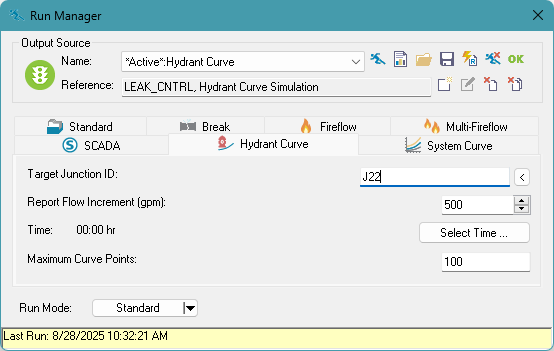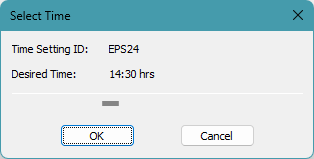The fire hydrant rating curve shows the relationship between residual pressure and the available flow for any hydrant. Complete residual pressure vs. available flow calculations are directly performed ranging from the imposed static demand to the maximum available flow at atmospheric pressure, for any user-specified flow increments. Hydrant curves are often required by fire departments who are responsible for ensuring that a specific hydrant can adequately control a potential fire demand and maintain minimum pressures.
To develop a hydrant curve, from the
InfoWater Pro  Analysis menu, select
Run Manager to see the dialog box below. Select the
Hydrant Curve tab, specify the desired parameters, and click Run
Analysis menu, select
Run Manager to see the dialog box below. Select the
Hydrant Curve tab, specify the desired parameters, and click Run ![]() .
.

Target Junction ID - Enter the identifier of the junction node or alternately pick the junction node using the Browse icon for running a Hydrant Curve Analysis.
Report Flow Increment - Enter the flow increment at which InfoWater Pro will calculate the residual pressures.
Time - The hydraulic time period at which fire flows will be calculated. A hydraulic simulation will be performed for all timesteps up to and including the specified time period where fire flow simulation will be performed. Click on the Select Time button to launch the Select Time dialog box.
Click on the status bar and move the bar to specify the Fire Flow time step. Click OK to save and exit. Click Cancel to cancel and exit from the Select Time dialog box.

Maximum Curve Points - The maximum number of points in the resulting curve. Be aware that allowing for many points with small increments leads to longer processing times and larger output files.